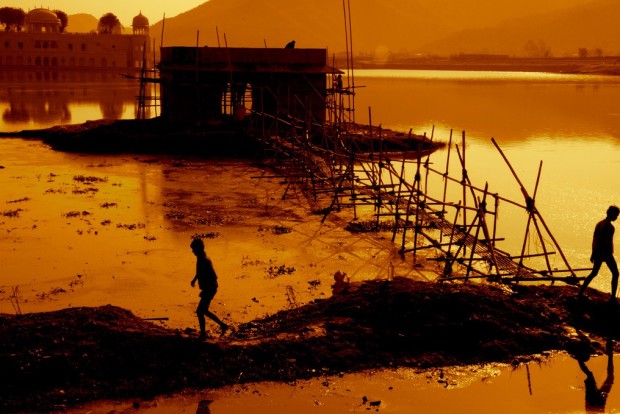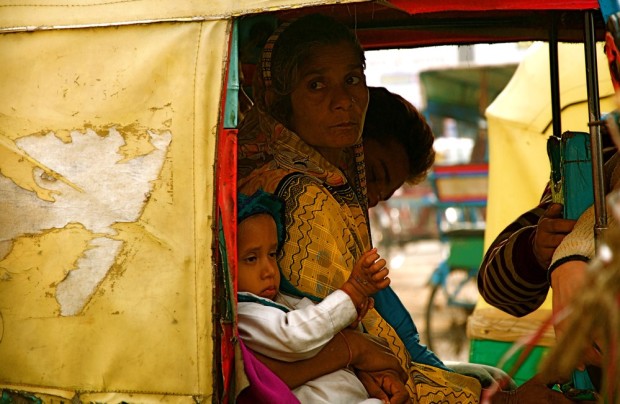India’s Modi Rewrites History for a Punitive State
United States Secretary of State John Kerry visited India in July 2014, and we know why. American officials don’t like to waste their time. The reason for the visit was simple: at present, the trade volume of the US with India is around $100 billion, and Mr. Kerry wants to enhance it to $500 billion. It should also be noted that on July 28, 2014, two days before Kerry arrived in India, the US State Department released a report entitled International Religious Freedom 2013. American officials are the soul of benevolence. They not only make people rich wherever they go but also spread ideas of democracy, freedom, justice and the like, about which the rest of world knows nothing.
One can read the report and see what it is, but I will instead concentrate on what it refuses to mention. Just months before, Muzzafarnagar, a District in Northwestern India, was reeling under intense communal riots, and the report blames “local police and the army” for this crime. What is noteworthy, however, is the report’s silence “as to whose behest were these police and army acting.” It cannot be denied that, without the involvement of local bureaucracy, one cannot organize such genocides. The report refuses to acknowledge the obvious connection between these local army and police elements and those fascists in power: yet another deliberate attempt by the US to confuse hard facts with propaganda.
If you are thinking that Secretary Kerry is unaware of who exactly is the author of these communal riots, then carefully consider this: Mr Kerry publicly congratulated Prime Minister Narendra Modi, who is alleged to have been the chief architect of the 2002 Gujarat Riots, for what he calls the saffron revolution.
Let us examine some of the contents of Modi’s saffron revolution. Just hours after Modi was sworn into office, his supporters vandalized the mosques in Mangalore. Members of Akhil Bharatiya Vidyarthi Parishad (ABVP), the student branch of the right-wing Bharatiya Janata Party (BJP), beat a Pakistani student in his hostel; Mohsin Sadiq Shaikh, a 28-year-old engineer from Solapur district was beaten to death in Pune. The whole of western Uttar Pradesh, and parts of Harayana and Punjab are reeling under the most unheard of communal tension.
All around India, scores of students have been beaten, arrested or threatened for raising their legitimate voices of dissent against a constitutionally elected dictator. For example, Amaresh Mishra, a scriptwriter, was arrested from his residence in Gurgaon for allegedly posting tweets with some anti-modi-hence-anti-national remarks. ABVP thugs beat five students from the Film and Television Institute of India (FTII), who had shown a documentary by renowned filmmaker Anand Patwardhan.
It seems that the entire working class from these areas have been dealt either death by starvation, via blind neoliberal policies, or death at the hands of communal-fascist goons. The saffron revolution is a concerted effort by rich businessmen/bureaucrats/politicians to exploit religion for their selfish ends. It is an attempt to terrorize those who do not fit into the chauvinist definition of “we.” The saffron revolution is a vicious cycle of terror and violence that has been unleashed on the disarmed and vulnerable. It is a most concerted attempt by the state and its repressive apparatus to metamorphose into a butcher’s shop. The saffron revolution is the aesthetic of punishment, the art of penalizing the dispossessed, a prince who rejoices in the blood and skulls of his subjects. It is a dream to convert India into what Michel Foucault calls a “punitive city.” It is a blueprint for the Nazification of India.
One of the first decisions of Modi’s great cabinet was to order that history textbooks be changed. The reason? For years, Indian academia has been dominated by leftist thugs who teach people about bad-bad things like imperialism, neo-imperialism, barbaric customs of the caste system, oppression of women by practices like sati (immolation on their husband’s funeral pyre), and the fact that both the Muslim and Hindu right had largely played the roles of sycophant to their British masters. These are the things that embarrass them. So they appoint a group named the Dinanath Batra Committee whose expressed intention is to Indianize education.
This is not the first tinkering with the historiography of India by the BJP. They have previously even attempted to fabricate evidence to support their stupid Aryanised version of history, where India is supposed to be the true inventor of every god damn thing. This also means, by definition, that the rest of the world is inferior. History has become a battleground where one must constantly prove one’s delusional superiority. History is no longer a means to promote peace and universal understanding but rather a tool in the hands of an intolerant state to destroy the last remnants of sanity.
In an interview, Yellapragada Sudershan Rao, the new chairman of the Indian Council of Historical Research (ICHR), declared that both “the Ramayana and the Mahabharata are true accounts of the periods in which they were written.” This is as good as saying that Homer’s Iliad is a true account of the Trojan War. Yet another flimsy attempt to confuse facts with myths. True, great pieces of literature bear the stamp of their era and give us valuable insights into the minds of the authors who composed them, but to state that the facts contained in them can form the basis of historical conjectures is a risk no serious scholar can take who is committed to the task of writing history. Literature, oral or written, can supplement our understanding; it cannot, however, replace history, which is based on ascertainable facts. The realm of imaginative speculation ends where history begins.
Even as John Kerry spoke to the press, communal tensions between Muslims and Hindus had gripped Northwestern India’s Saharanpur, where Eid was being celebrated, as the media put it, “under the shadows of guns.” When Kerry first laid eyes on Modi, the small inner monologue in Kerry’s mind might have sounded like this. Kerry (in his head to Modi): “Well guys, we will forget what you do to Muslims, Christians, Buddhists, Dalits, leftists, women, dissenters and students here in India, if you forget what we do in Afghanistan and Iraq.” You see: friendship that is based on ties of profit is limited by its very nature. It is myopic. One learns to forget the crime and criminality of one’s friends.
Editor’s Notes: Imtiaz Akhtar is the author of Kafka Sutra, a collection of short stories. Photographs three, six, eight and nine by Chris JL. Photographs four and seven from Al Jazeera English. Photographs one and ten from U.S Department of State. Photograph two (caricature) by Donkey Hotey. Photograph five from Narendra Modi photo-stream.
Related Articles























5 Responses to India’s Modi Rewrites History for a Punitive State
You must be logged in to post a comment Login